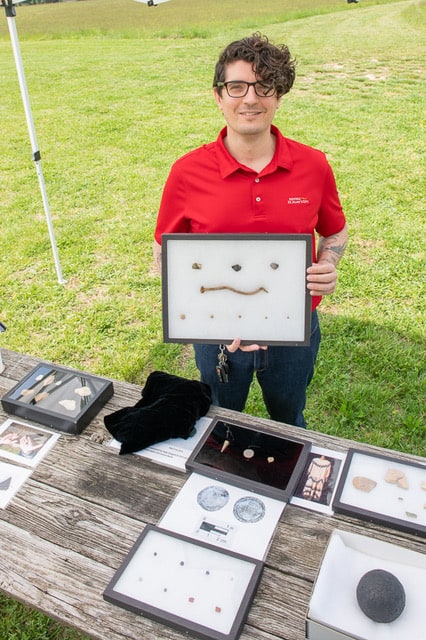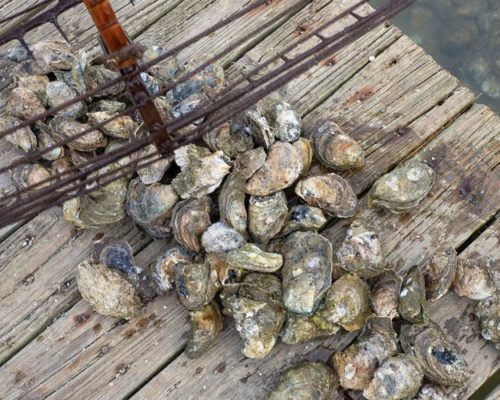Archaeologists in Historic St. Mary’s City (HSMC) have begun to dive into the treasures that lie at the site of Maryland’s first settlement, the circa-1634 St. Mary’s Fort. And with the help of Governor Larry Hogan last week, they revealed some of the incredible finds already being made.
As Bay Bulletin reported in March, historians had been searching for the exact site of the fort for some 90 years, but it took a geophysicist using magnetic susceptibility, magnetometry, and ground-penetrating radar to confirm its location.
Dr. Travis Parno, HSMC Director of Research and Collections, and the governor unveiled artifacts including a 1633/1634 King Charles I silver shilling, an early 17th-century copper saints medallion, and a copper “tinkling cone” (an object worn by Native peoples).
The site sits in a farmer’s field about a half-mile in from the St. Marys River, and is close to at least two indigenous sites that date back 500–3,000 years. Dr. Parno’s team is working with the Piscataway tribe at these sites as part of a larger partnership, People to People: Exploring Native-Colonial Interactions in Early Maryland.
Click through the photos below to see the artifacts up close, as captured for CBM by photographer Dan Duffy:
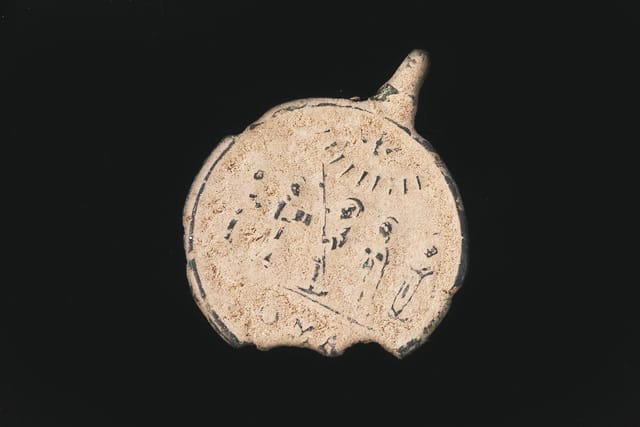
This five saints medallion speaks to the Jesuit mission of spreading Christianity; medals were often used as conversion tools. 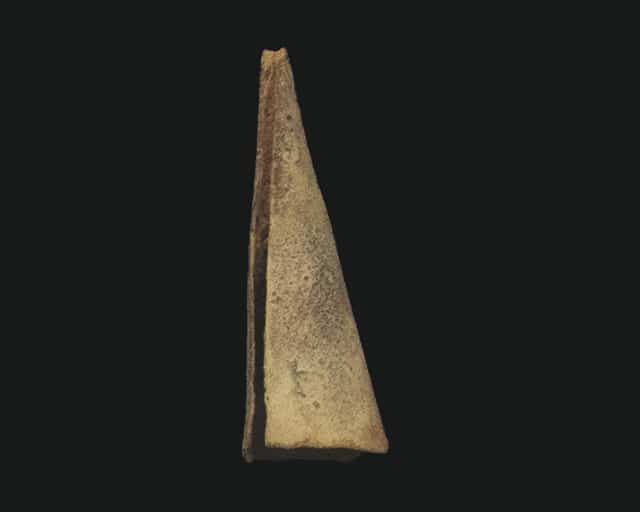
This copper alloy tinkling cone would be worn by Native people. Made by colonists, it’s evidence of Native-colonial interaction in the early 17th century. 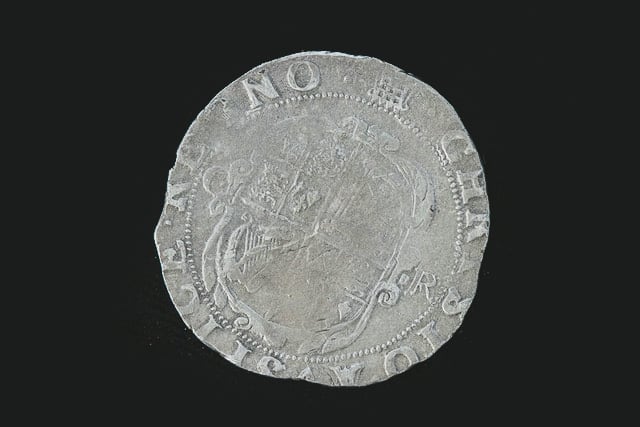
This 1633/1634 King Charles I silver shilling helps confirm the site as St. Mary’s Fort. Coins are rare in early Maryland. 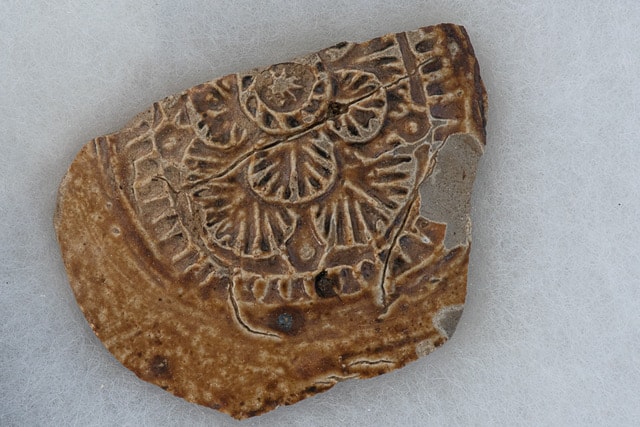
An example of intricate carving 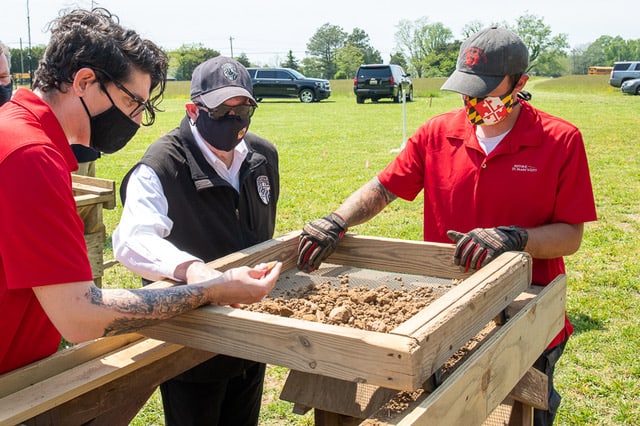
Gov. Hogan examines treasures sifted by HSMC staff. 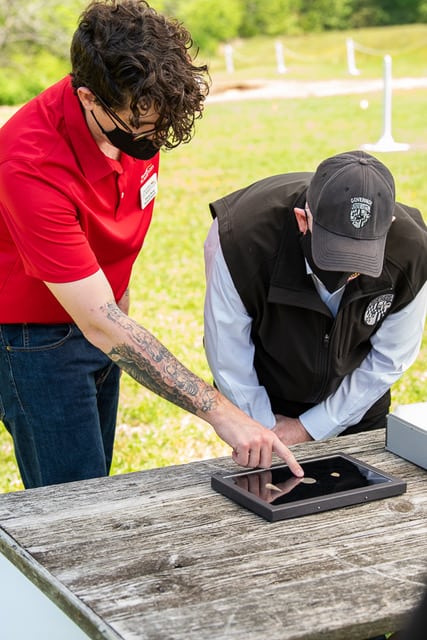
Dr. Travis Parno points out historic artifacts to the goveror. 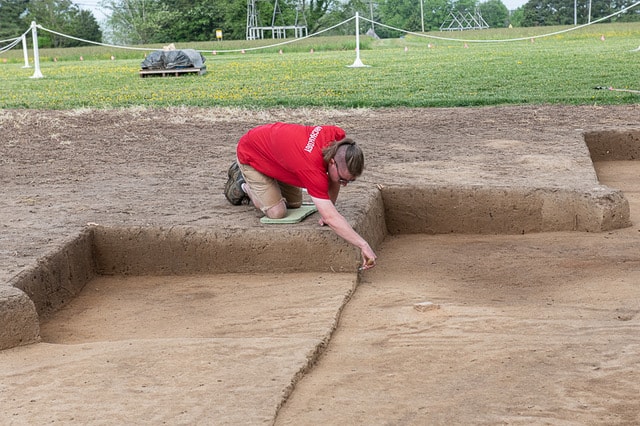
August Rowell works with delicate tools in the painstaking excavation of the site.
St. Mary’s City was Maryland’s first capital and is the fourth oldest English Colonial settlement in the nation, behind only Jamestown (1607), Plymouth (1620), and Massachusetts Bay (1630). HSMC has worked to preserve more than 800 acres of land and three miles of shoreline near the St. Marys River.
-Meg Walburn Viviano

